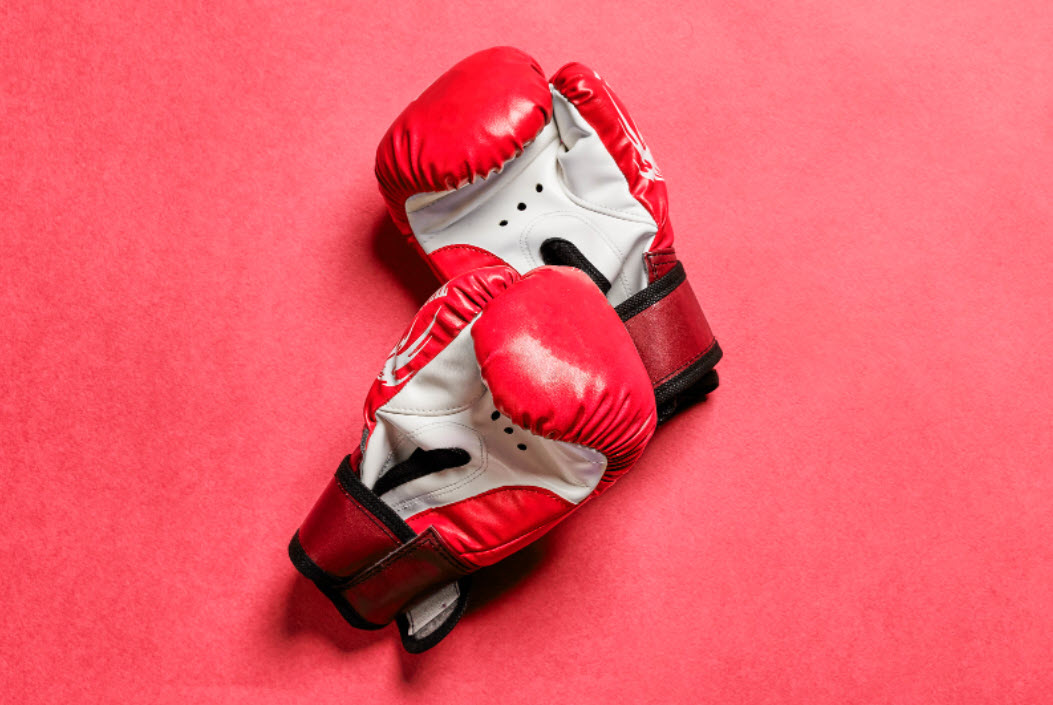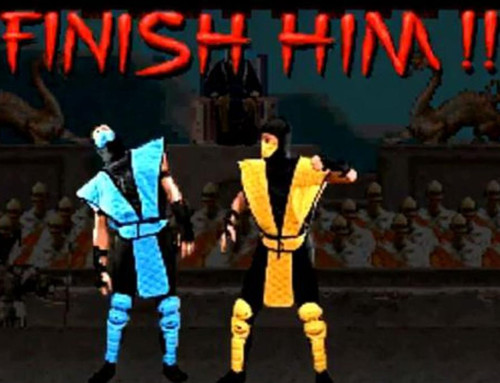Your instructor has asked you to put your gear on. It’s about to go down! For many students, the best part of your day is about to happen. Sparring! You throw on your foot gear in order to protect your sparring partners from your devastating kicks you’re about to unleash. You then throw on you gloves, you know, so you don’t dig too deeply into your sparring partners ribs with your knuckles! Then you strap on your head gear to help soften the blow, in that rare chance your opponent lands a sucker punch to your head. How else would they land a punch to such a magnificent fighter? And lastly, you pop in your mouthpiece. Your parents paid a pretty penny to straighten those pearly whites! You don’t want to get them knocked out!
Have you ever wondered what your sparring gear is for? For myself, I never really thought much about it until I entered a sparring tournament that listed the head gear as optional. That seemed odd to me. I assumed the head gear would be the most important piece of equipment of the set at the time. Well, aside from the groin cup for guys. A few years later I competed in tournament that required chest gear and face shields. This only seemed to cater to participants being more willing to hit harder and not care about getting hit as much. I saw more injuries in these tournaments that the ones that were lenient on needing gear. This too got me thinking. What is this equipment for?
Is this sparring gear used to protect you or the opponent? Why did I see more injuries in the tournaments with more gear requirements then? Would tournaments, and sparring in general, be safer without gear?
Quick note, most of the gear I’ll be referencing is what is known as Foam-dipped gear. Meaning there is no hard pieces, and it is all foam covered by a thin later of paint for coloring and to reduce chipping/cracking of the foam. With that said, most gear is similar in its function even though the material used may be different.
Head Gear
Is it to protect head shots? To an extent, yes, it can limit the impact to your head from a strike or kick. However, hand gear does much the same. The head gear’s primary function is actually to protect the wearer incase of a fall backward onto hard flooring. Many students fall backward at the lower ranks when sparring. Many bad injuries can occur from this fall. Head gear can be life saving in this regard. At the higher ranks, these falls aren’t as common. And if a fall does happen, the student is usually quite good at protecting themselves during that fall. This is why some tournaments present the option not wearing head gear for black belt participants.
Hand Gear
Many assume the primary function is to protect the opponent from the hard knuckles of a strike. As mentioned with head gear, potentially yes. Especially when striking the face. A hard knuckle striking your mouth can easily knock loose a tooth, whereas a padded hand gear can disperse that strike across more surface area to limit the impact. However, the more important function of hand gear is to protect the fighters’ knuckles.
If you have never punched someone in the face, it’s like punching a rock. Most people are more likely to break their knuckles before breaking someone’s face or skull. Even striking perfectly with the first two knuckles – which is much harder than you think it is on a moving target– the knuckles just can’t withstand that much impact. This is also why many practitioners strike hard surfaces in their training, such as makiwara boards. This conditions their knuckles to take that impact if they ever need to strike someone in self-defense.
Sparring without hand gear has led me to using more control in my punching and choosing to strike with the palm of my hand (palm heel strike) when striking the head to protect my knuckles. I’ll punch a brick wall with gloves on, but that wall doesn’t upset me as much to want to punch it without gloves.
Foot Gear
Much like hand gear, many assume it’s to limit the impact on the opponent when you land a kick. This too, is a function of the foot gear. But protecting the wearers foot is more likely. I’ve cracked my foot on many opponents’ elbows and knees over the years. I’ve walked around with welts the size of a baseball on the top of my foot on more than one occasion. Even with foot gear on, I’ve still left bruises on my foot, albeit still functional and not limiting me in a sparring match compared to no foot gear.
Without foot gear though, I’ve been more measured in my kicking. Pain is a good teacher! One big reason to wear foot gear though, is to cover toes/toenails. A kick to the eye with a sharp toenail, while rate, is extremely dangerous and something to think about when deciding on foot gear.
Mouth Guard
Above all other pieces of sparring equipment, this is the one that seems to get the most confusion as to what it’s used for. Even though it seems obvious that it’s to protect your teeth, it’s primary function is to help limit knock outs by providing a cushion between the top and bottom teeth. That’s not to say it can’t help mildly protect the teeth from cracking from a hard hit, especially when the jaw gets struck from underneath. Without the mouth guard, the teeth would slam together and potentially crack or shatter teeth.
Note that I’ve seen people get their teeth knocked out while wearing a mouth guard. The mouth guard did a great job of containing those teeth in the guard though, rather than being sent flying or getting swallowed. So that’s something! But overall, the mouth guard is to cushion the blow from a hard upward shot to the jaw that would otherwise lead to a knockout. Though it’s still very possible to get knocked out while wearing a mouth guard! Just that it lowers the chances.
Face Guards and Chest Guards
While I’ve heard some strange reasons for chest guards, such as it protects pressure points on the body from being struck on accident that could kill someone (I’ve seen no evidence of this), face
and chest guards are pretty straight forward. Face guards protect hard hits to the face that could break the nose, among other issues. And chest guards can limit broken ribs and hard organ shots that can be debilitating, such as a liver shot.
While they do a good job of protecting the area they are covering, I rarely suggest use of these two pieces except for specific occasions. Years ago, while still training at my instructors’ studio, our studio had a “gorilla suit” donated to us for training. It was glorious! It was a full body suit designed to take a beating and not injure the wearer. You could get hit by a car or stabbed and not feel a thing. I was eager to jump into the suit and go spar with no regard for my body or injuries.
One person I sparred, however, was a former boxer. He wailed on my face with a flurry. My face felt nothing! My neck though, was collecting a laundry list of injuries that have plagued me to this day. Pads can’t stop the neck from getting whiplash. Which is exactly what happened. My head getting a flurry of punches sent my head snapping in every direction. I’ve seen this same issue come up when people wear face masks. Have a broken nose? Or maybe recent dental work? Those are good reasons to wear a face mask. It’s accepting that your neck will take more punishment in order to protect your face.
I’ve found chest gear is quite similar. Aside from being forced to wear one at specific tournaments, I’ve only worn chest gear when I had broken ribs but didn’t want to stop sparring. It didn’t help much. My sparring partners seemed to take it as “its padded, so I no longer to need to hold back”. This is the issue with both face masks and chest gear. People seem to throw caution to the wind and make the assumption injuries aren’t possible when wearing this gear.
Should we abandon sparring gear all together?
No. There are definitely times when some sparring gear is quite useful. Each situation is a little different. Sometimes the only gear I wear is a mouth guard and a cup. Other times I throw on foot, hand, head, shin gear, along with mouth gear and a cup. Injuries, such as scraped up knuckles, sharp toenails, broken nose, etc. should be protected by gear. In general, though, sparring gear tends to cause more issues than it solves when it involves experienced adults.
Personally, I believe less is more when it comes to training with sparring gear. I think it gives a false sense of security in some regard and can lead students into hitting harder than they normally would. Such as hand gear. Remove them and you’ll find yourself controlling your punching power knowing that each hit can not only damage the knuckles and wrists but can even cut your knuckles. Gloves protect those issues from happening. Which is good if all you are looking to do is protect your hands. But it negates your understanding of what it’s like to actually punch someone and how much that can damage your hand.
You don’t want to find that out in a real self-defense confrontation where you punch someones head and break your hand, leading you to be unable to punch again or grab. Lowering your success rate of defending yourself. This can also be said about foot gear. I am much more conservative in my use and power of my kicks without foot gear on. It takes one elbow dropping down on the top of your foot to never want to kick again. I place shin gear in this same category.
Regarding head gear, there has been more and more research going into CTE (Chronic traumatic encephalopathy – brain damage due to repeated head blows). The weight and style of head gear is in that research mix. The foam dipped head gear most traditional styles use is very light weight and simple. Which seems to prove quite useful and not something that will have a large negative effect in regard to CTE. Heavier headgear on the other hand, is showing to have a noticeable effect.
This indicates to me that the lightweight foam dipped head gear most use, while not overly useful beyond the lower ranks in which falling backwards is commonplace, is not going to have much of a negative effect like some of the other gear we use and worth wearing on a regular basis.
I find it important to note that most of this blog is geared towards adults wearing or not wearing gear. I have a tendency to load up youth students with gear when they spar. Youth students have less control of their power and are much more comfortable early on when wearing gear. Many youth students struggle when first sparring, so padding them up give them more confidence. There is also parent involvement and insurance to think about. Trying to explain to parents why I won’t be padding up their children before they spar is a discussion I don’t have time for. And insurance will want to know if I’ve taken every precaution to protect a student. Even though it can be argued that no gear is safer than full gear, insurance companies will likely not agree.
Overall, there should be a good reason for using or not using gear. The instructor should know when it can be useful and when it can be a detriment to training. The general rule of thumb for me is to start students off with a good amount of gear to ease them into sparring. Then pull back to only wearing head gear, mouth guard and cup when applicable. Also keep in mind the style of sparring being done. When we do grappling, sparring gear gets in the way and doesn’t help protect much of anything. Again, each situation is different, just know why you are or are not
using gear.







I remember getting my first set of safety gear in 1977 , the tournaments in Pittsburgh allowed face contact , as long as you didn’t draw blood , which is why the Tournaments during that era always had EMTs and a ambulance on stand by , on the flip side , brown and Black Belt divisions always had competitors that came from schools that allowed contact